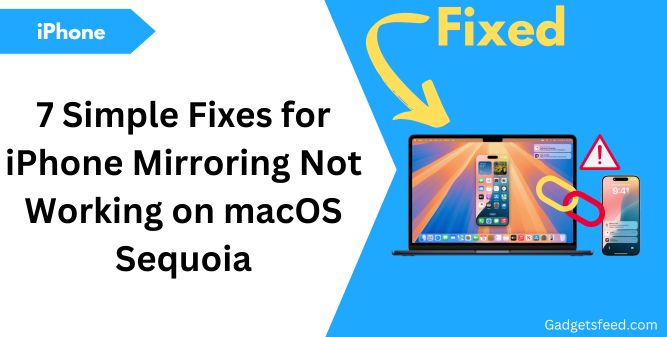One of the standout features of Apple’s iOS 18 and macOS Sequoia (version 15) is the iPhone Mirroring app, which allows users to replicate and control their iPhone screens directly from their Mac.
This feature makes multitasking effortless, enabling users to access iPhone apps without picking up their devices.
However, while it’s a great productivity tool, some users have reported issues with getting the feature to work properly.
If you’re facing problems with iPhone Mirroring on macOS Sequoia, don’t worry.
This article will explore seven simple fixes to help you troubleshoot and get it working seamlessly.
Common Reasons iPhone Mirroring Isn’t Working
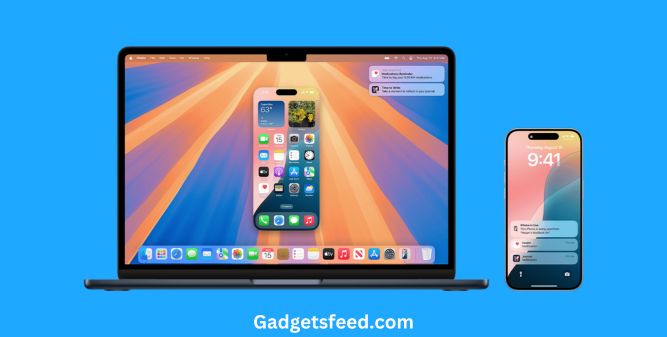
In most cases, iPhone Mirroring may fail to function due to not meeting the specific requirements set by Apple. Here are the essential criteria for successful mirroring:
1) Device Compatibility:
- Mac Specifications: Ensure that your Mac is equipped with Apple silicon or the Apple T2 Security Chip and is running macOS Sequoia 15 or later.
- iPhone Specifications: Your iPhone must be operating on iOS 18 or later.
2) Apple ID and Two-Factor Authentication:
Your iPhone and Mac should be signed in to the same Apple account, with two-factor authentication enabled.
3) Bluetooth and Wi-Fi:
Verify that Bluetooth and Wi-Fi are enabled on both devices.
4) iPhone Proximity:
Your iPhone is locked and near your Mac. It can also be charging and using StandBy
5) Personal Hotspot:
Make sure your iPhone is not using Personal Hotspot, as this feature must be disabled for mirroring to work.
6) Internet Connection:
Your Mac should not be sharing its internet connection, and it must not be using AirPlay or Sidecar features.
7) Non-EU Apple Account
You must have a non-EU Apple Account, as iPhone Mirroring is not available in the EU under DMA.
By confirming that these requirements are met, you can significantly increase your chances of successfully using iPhone Mirroring.
However, even when requirements are satisfied, issues may arise from factors such as network instability, misconfigured settings, or software bugs within the operating system.
Depending on the underlying cause, there are several effective troubleshooting steps you can take to resolve iPhone Mirroring problems.
7 Ways to Fix iPhone Mirroring on macOS Sequoia
Restarting both your iPhone and Mac should be your initial troubleshooting step when encountering issues with software features.
This simple action can often resolve temporary glitches that may be affecting functionality.
If restarting does not fix it then refer to the step-by-step solutions outlined below.
1) Choose the Right iPhone for Mirroring
If you have multiple iPhones connected to your Apple Account, it’s important to select the right one for iPhone Mirroring. If you accidentally pick another iPhone, the feature won’t work as expected. Here’s a quick way to check:
- Open System Settings on your Mac and head to Desktop & Dock.
- Look for the drop-down menu next to iPhone in the Widgets section.
- Select the iPhone you want to use for mirroring.

Many users often select the wrong iPhone on their Mac, leading to mirroring issues.
We’ve received numerous emails expressing gratitude for pointing out this simple yet crucial step.
By ensuring that the correct device is chosen, users can easily resolve their iPhone mirroring problems.
Note: Ensure that Face ID is enabled on your iPhone for iPhone Mirroring to function properly.
2) Restart the iPhone Mirroring App
Sometimes, the problem might not be on your iPhone or Mac, but rather from the iPhone Mirroring app itself.
A software glitch could prevent the feature from functioning properly.
Fortunately, simply relaunching the app may resolve the issue. Here’s how to do it:
- Force Quit the App: Click the Apple logo in the menu bar and select Force Quit.
- Select iPhone Mirroring: Choose iPhone Mirroring from the list of applications and click Force Quit.
- Restart the App: Open the iPhone Mirroring app again to see if the problem has been fixed.

Sometimes, a quick restart is all it takes to fix minor issues!
3) Reset the Network Settings on iPhone
iPhone Mirroring cannot work if there is an issue with your connectivity settings.
Resetting the network settings on your iPhone can help resolve this problem.
Keep in mind that this process will erase all saved Wi-Fi networks, Bluetooth pairings, and VPN settings, so it’s recommended to use this option only after exhausting other troubleshooting methods.
To reset your network settings:
1) Open the Settings app on your iPhone and Tap on General. Scroll down and tap on Transfer or Reset iPhone.


3) From the next screen, tap Reset, then tap Reset Network Settings.


This action will reset all network-related settings on your device, potentially resolving connectivity issues that may be hindering iPhone Mirroring.
After resetting, you will need to reconnect to your Wi-Fi networks and re-pair any Bluetooth devi
4) Reset and Reconnect the iPhone Mirroring
Network glitches between your iPhone and Mac can sometimes interfere with iPhone Mirroring functionality.
To resolve these connectivity issues, try unlinking your iPhone from the iPhone Mirroring app on your Mac and establish a fresh connection.
Here’s how to do it:
1) Launch the iPhone Mirroring app on your Mac. Click on iPhone Mirroring in the menu bar and select Settings.

2) Click on Reset iPhone Access.

3) Confirm your action by clicking Reset.

Note: You can also stop your iPhone from connecting to your Mac in the iOS Settings app by going to Settings > General > AirPlay & Continuity > iPhone Mirroring and tapping the minus icon next to your Mac.
After disconnecting your iPhone, make sure to relaunch the iPhone Mirroring app on your Mac and reconnect your iPhone by following the on-screen instructions.
5) Disable VPN and Check the Firewall Settings on Your Mac
iPhone Mirroring relies on your local network to detect nearby Macs. However, having a VPN enabled on your devices can sometimes disrupt this process, preventing the feature from functioning correctly. To troubleshoot, consider disconnecting both your iPhone and Mac from the VPN to see if it resolves the issue.
To turn off the VPN on your iPhone:
- Open the Settings app or your VPN app.
- Toggle off the VPN option.
To turn off the VPN on your Mac:
- Navigate to System Settings > VPN or open your VPN app.
- Click Disconnect.
After disabling the VPN, check your Mac’s firewall settings to ensure they aren’t blocking incoming connections:
- Go to System Settings > Network > Firewall.
- Review your firewall settings. If it’s set to block all incoming connections, it may cause issues with iPhone Mirroring.
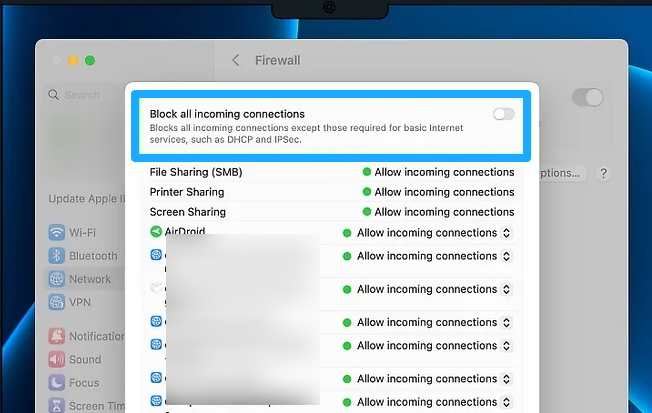
Tip: If your firewall is turned OFF, try toggling it ON and then check if iPhone Mirroring works. Conversely, if the firewall is ON and you’re experiencing issues, try toggling it OFF and see if that resolves the problem.
By addressing both the VPN and firewall settings, you can help restore functionality to iPhone Mirroring.
6)Adjusting Private WiFi Address Settings
Adjusting the Wi-Fi settings on both your iPhone and Mac can help. Specifically, setting the “Private Wi-Fi Address” to “Rotating” has proven effective for many users, as it restored their mirroring functionality.
Here’s how to do it on both devices:
On Your iPhone:
Open the Settings app on your iPhone then Go to the Wi-Fi setting
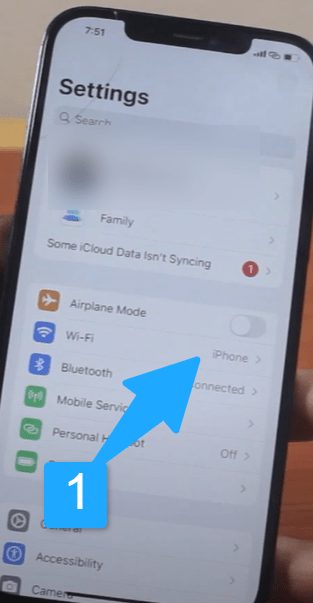
Find the Wi-Fi network you’re connected to and tap the (i) icon next to it.

Look for the Rotate Wi-Fi Address option. If it’s set to “Off” or “Not Rotating,” change it to Rotating.
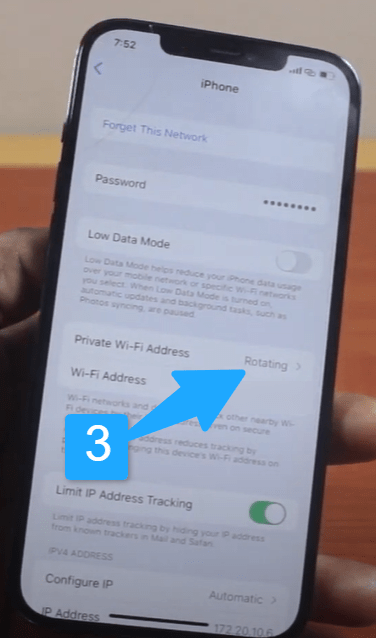
On Your Mac:
1) Open System Settings: Click the Apple logo in the top-left corner and select System Settings.
2)Go to Network: Click on Network.
3) Select Wi-Fi: Choose Wi-Fi from the left sidebar and click Details.
4) Adjust Private Wi-Fi Address: Under the Advanced settings, locate the Rotate Wi-Fi Address option. Make sure it is set to Rotating.
- Reconnect: Save your changes and reconnect to the Wi-Fi network.
Tip: If you’re encountering a mirroring timeout error, try keeping both devices on the “Rotating” setting for mirroring. This approach has helped many users resolve the issue effectively.
7) Check for iOS and macOS Updates
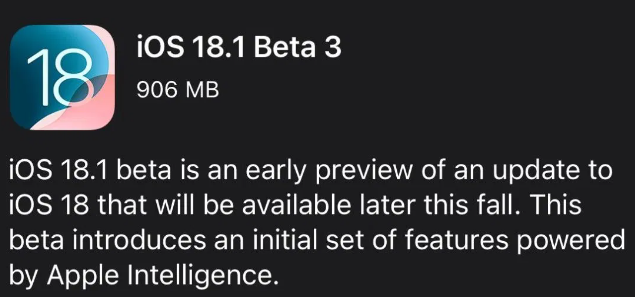
Both iOS and macOS regularly receive updates that fix bugs and enhance performance so if any update is there do it as it might have a fix for the bug that is causing this issue.
To check for updates on your iPhone:
- Open Settings.
- Tap General.
- Select Software Update. If an update is available, tap Install.
To check for updates on your Mac:
- Open System Settings.
- Click on Software Update.
- Install any available macOS updates.
Keeping your devices up-to-date ensures that you have the latest features and fixes, which can help improve the performance of iPhone Mirroring.
Some other Solutions that work for users:
- Logged out of iCloud and then logged back in
- Turning off private networks on MAC and iPhone
If you are still facing an issue make sure you have the correct model of Mac as Apple suggests
You’ll need a Mac that can run MacOS Sequoia, which includes:
- iMac: 2019 and later
- MacBook Air: 2020 and later
- MacBook Pro: 2018 and later
- Mac Studio: 2022 and later
- Mac Mini: 2018 and later
- Mac Pro: 2019 and later
- iMac Pro: 2017 and later
And on the iPhone, the following models will run iOS 18:
- iPhone 11 and later
- iPhone XS and iPhone XS Max
- iPhone XR
- iPhone SE (2nd generation or later)
Wrapping up
I hope these troubleshooting steps have helped you resolve your iPhone mirroring issues, allowing you to enjoy the new features of iOS 18 and macOS Sequoia.
If you’re still having trouble, don’t hesitate to contact Apple Support for further assistance.
Also, please share in the comments which solutions worked for you, your experience could help other users facing similar challenges!

Hi, I’m Michael Davis, the owner and writer of GadgetsFeed.com. This website is where I share my knowledge and passion for tech, laptops, and computers. I’m a software engineer by profession, and I enjoy testing and reviewing various gadgets and technologies. I started GadgetsFeed.com to help others find easy solutions for their laptop, computer, and tech problems.
